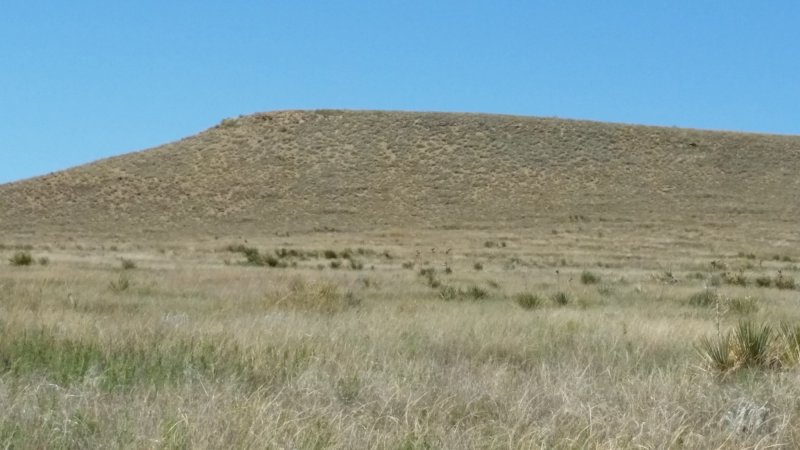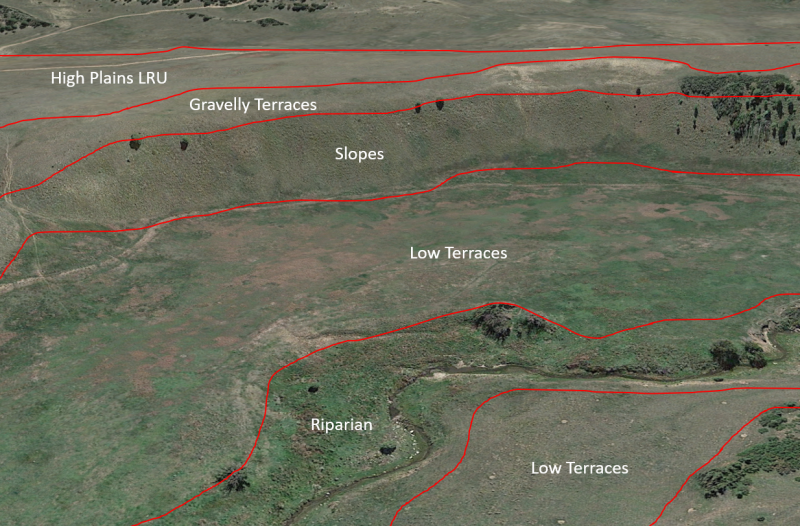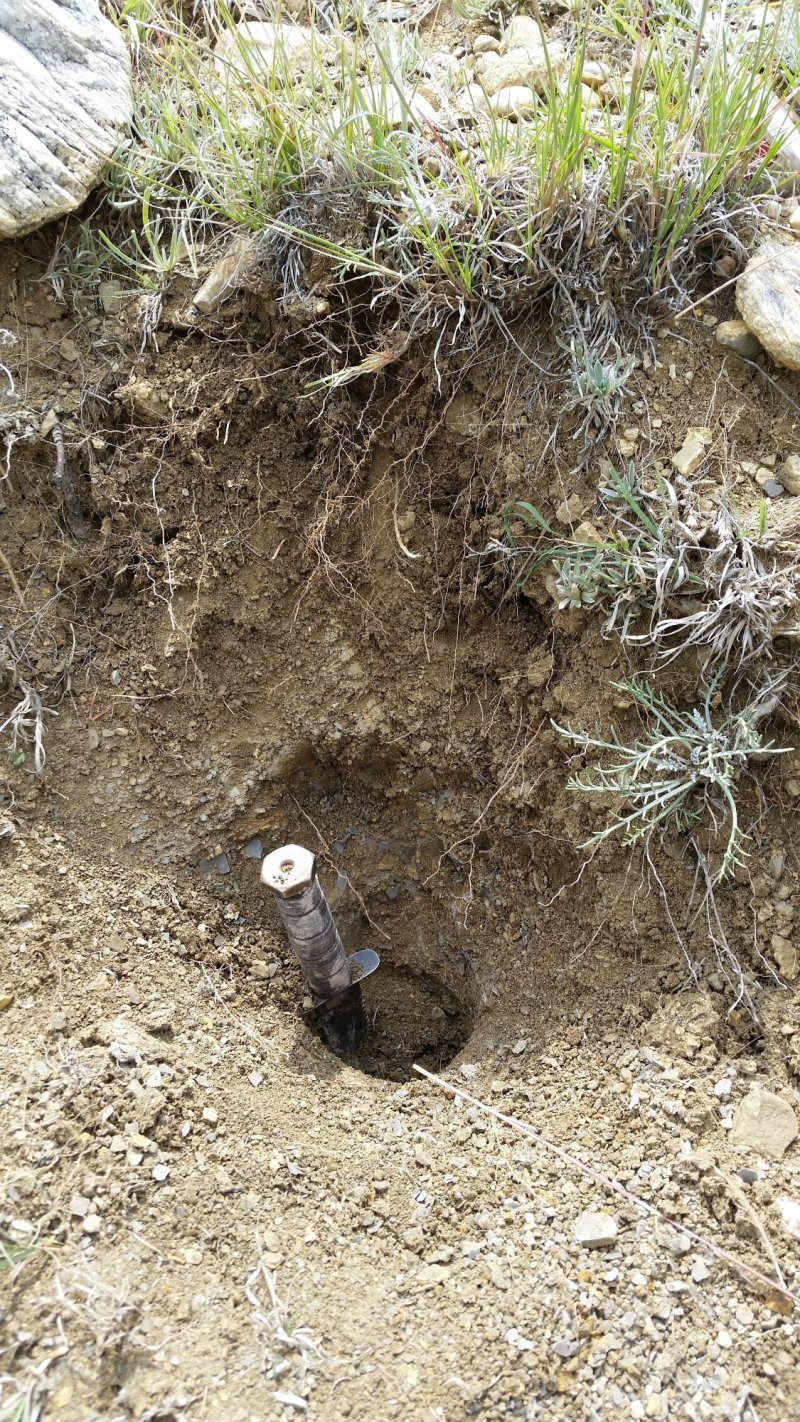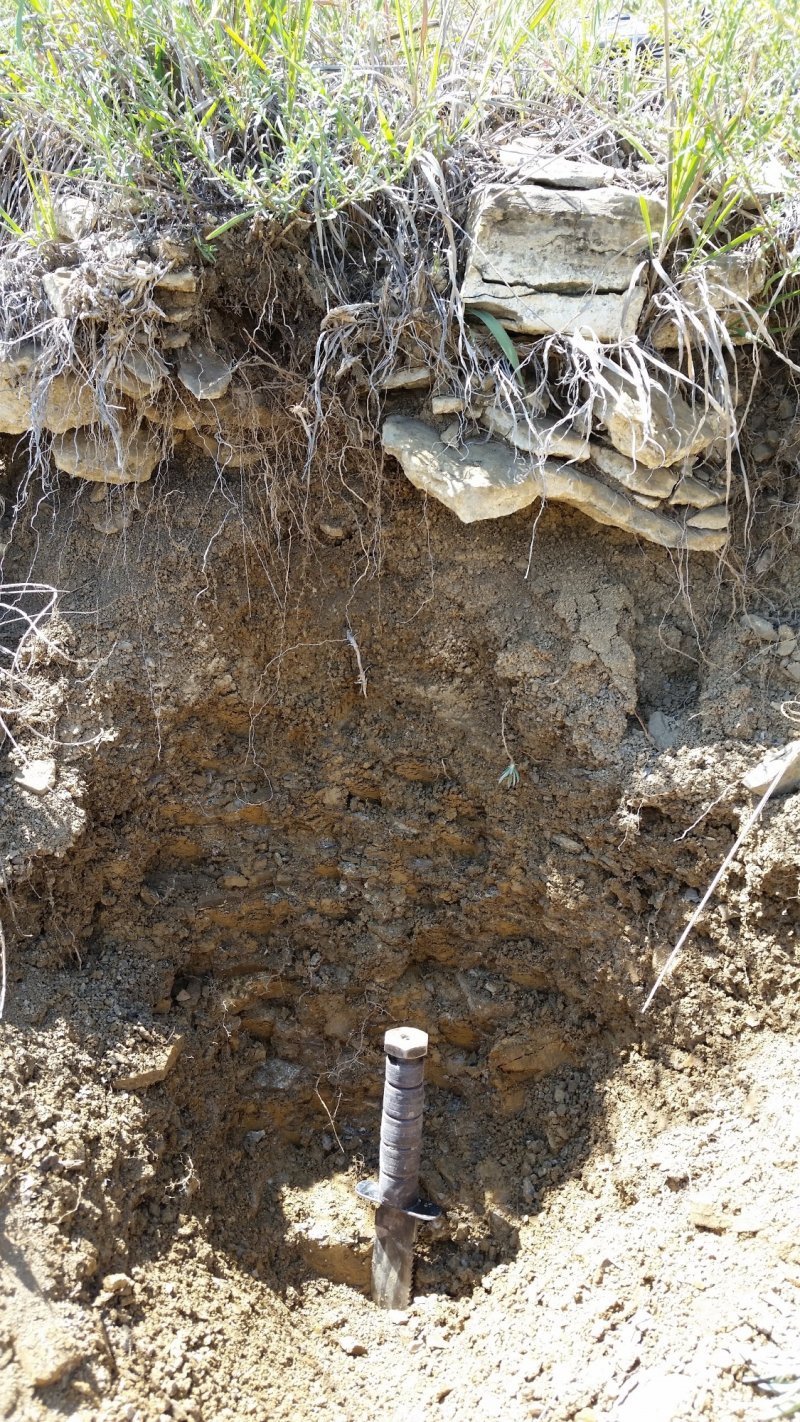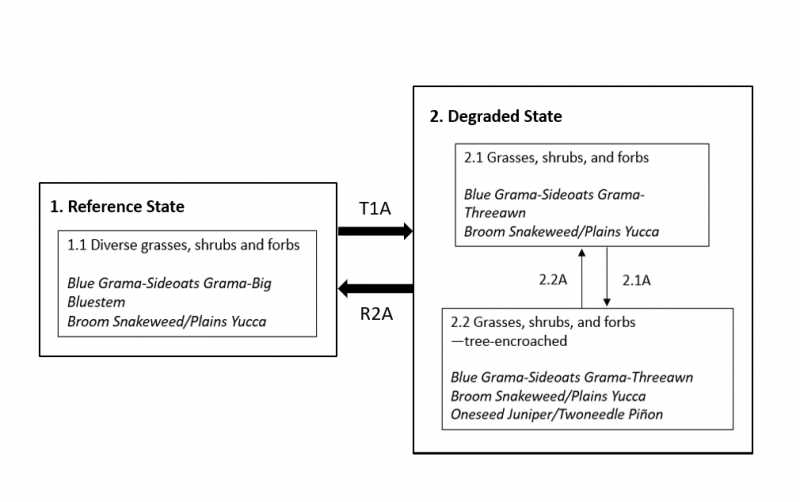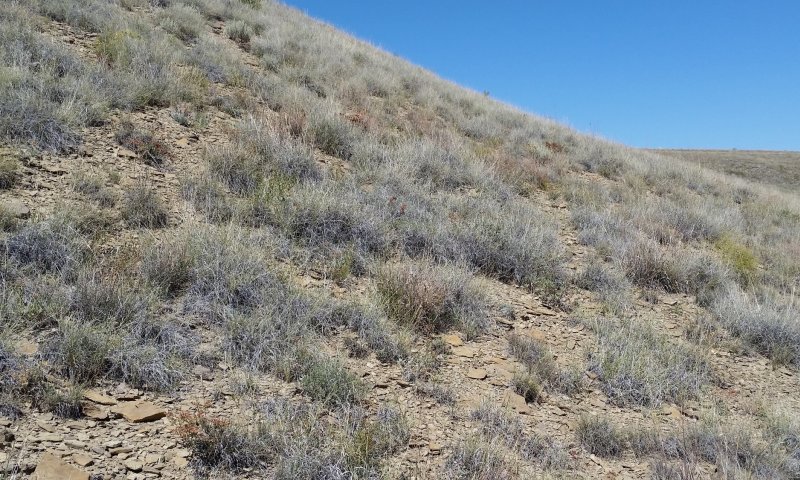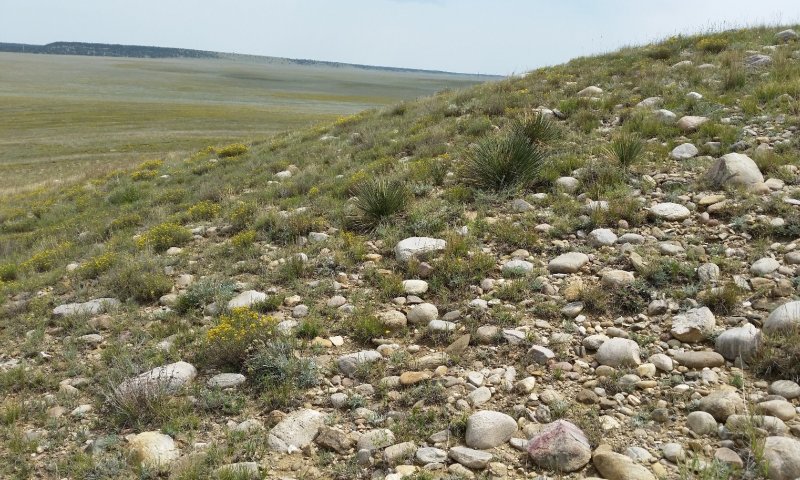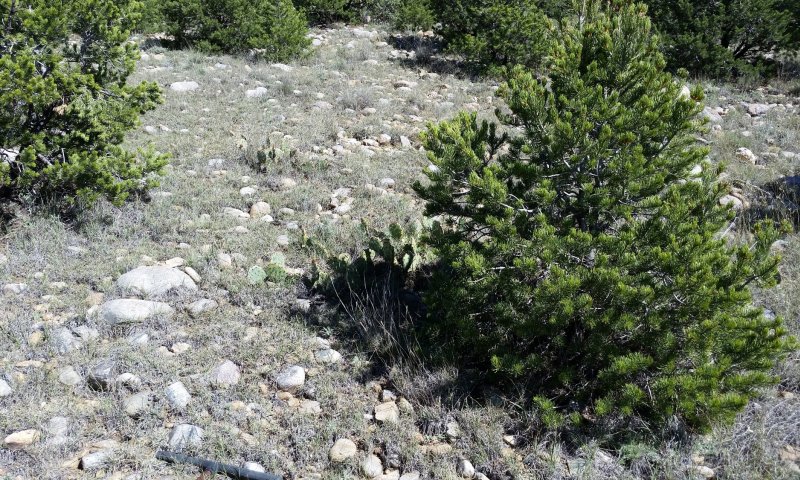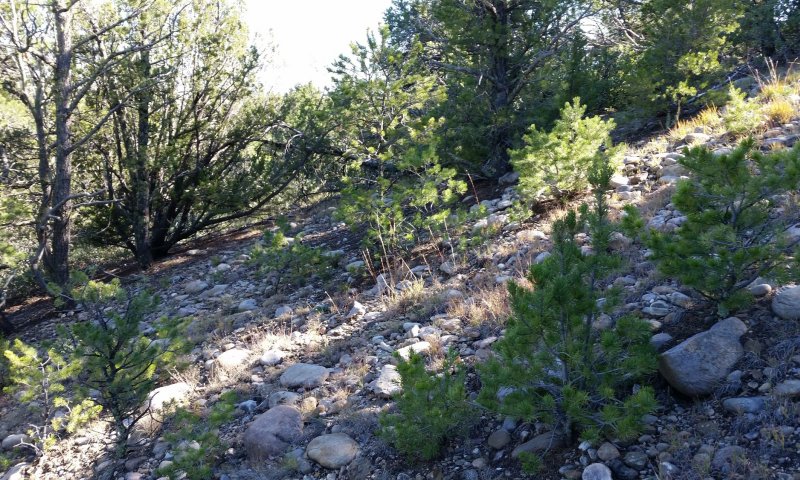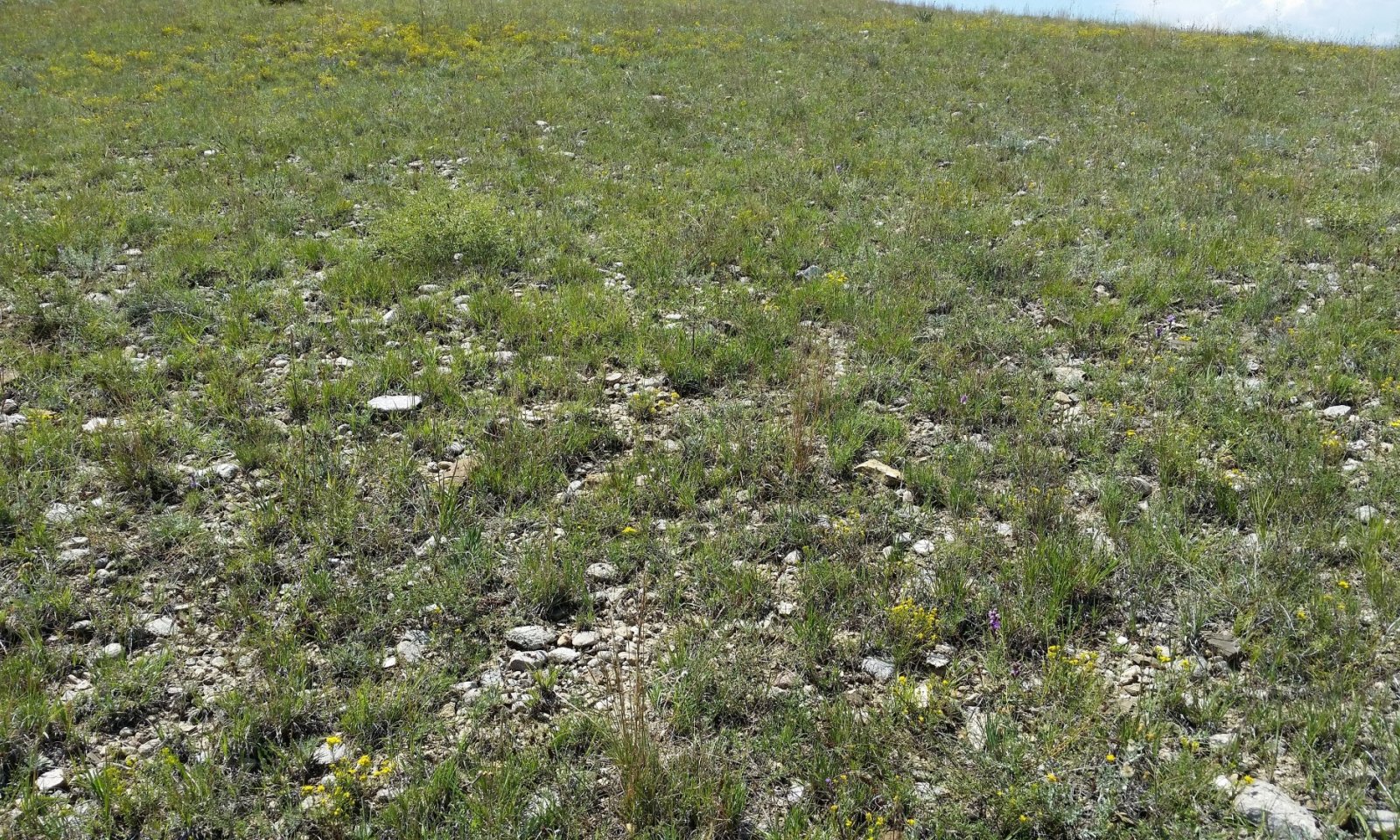

Natural Resources
Conservation Service
Ecological site GX070A01X006
Slopes
Last updated: 10/01/2021
Accessed: 12/18/2025
General information
Provisional. A provisional ecological site description has undergone quality control and quality assurance review. It contains a working state and transition model and enough information to identify the ecological site.
MLRA notes
Major Land Resource Area (MLRA): 070A–High Plateaus of the Southwestern Great Plains
This site is only applicable to the Canadian Plateaus LRU of MLRA 70A (LRU 70A.1).
LRU notes
This site is only applicable to the Canadian Plateaus LRU of MLRA 70A (LRU 70A.1). Please refer to the following key:
Land Resource Unit (LRU) Key for MLRA 70A
– High Plateaus of the Southwestern Great Plains
1a. The site exists on a landform of volcanic origin, such as a basalt plateau, or is part of an escarpment system that rises directly to a volcanic structure. These escarpments are included if they have volcanic alluvium or colluvium (i.e. basalt, rhyolite, tuff, cinders) overlying non-volcanic residuum or bedrock (i.e. sandstone, shale). → VOLCANIC PLATEAUS LRU (VP)
User tip: Other alluvial or colluvial landform features extending below the escarpments are not included unless they have a predominance of volcanic fragments at the surface. Also, note that playas atop volcanic plateaus are included within the VP-LRU.
1b. All other sites. → 2
2a. The site exists in the annulus or floor of a playa. → CANADIAN PLATEAUS LRU (CP)
User tip: Small islands of playas occur within large areas of HP-LRU. These sites may be far from the nearest CP landform but will still key-out to the CP-LRU. The playa rim components, however, may key out to either LRU, so it is important to properly identify their soil properties.
2b All other sites. → 3
3a. The site is part of an escarpment landscape complex (defined below) or is within a canyon, valley, or small basin confined by such escarpments. At the upper boundary of the LRU, the soil surface meets at least 4 of the following 5 criteria:
I. Shallow or very shallow soils are present in at least 50% of the landform area;
II. Soils are underlain by sandstone bedrock of the Cretaceous Dakota Formation or older;
III. Presence or historical evidence of a conifer stand (≥ 2% canopy cover);
IV. The ground surface has a slope of at least 10%;
V. The landforms drain towards steep-walled escarpments or canyons below the Dakota sandstone (older Jurassic and Triassic Formations underlie this sandstone mesa cap).
→ MESOZOIC CANYONS AND BREAKS LRU (MCB)
User tip: The MCB sites also occur on any colluvial or alluvial bottomlands confined within escarpments or canyons. Some valleys transition from CP to MCB, or back to CP, and the turning point can be difficult to determine. Generally, the landforms are part of the MCB when confined between Dakota sandstone breaks or escarpments on both sides. Much of the acreage in the MCB is aproned by colluvial debris fans—composed of sandy materials with large sandstone fragments visible on the soil surface, including large stones or boulders. The soils in the bottoms of these confined valleys will also be in the MCB. When the valley opens, or there is only a single escarpment opening to the plains, the landforms below the steeper, rockier escarpments will be members of the CP-LRU.
3b. Fewer than 4 of the above criteria are met. → 4
4a. The soil is on a plateau summit position (tread) and is within 50 cm to contact with either plateau bedrock (non-soil bedrock of cemented sandstone, limestone, or shale) or strath terrace cobbles2, but not a petrocalcic contact (caprock or caliche of cemented calcium carbonate). → CANADIAN PLATEAUS LRU (CP)
4b. No plateau bedrock or strath terrace cobbles within 50 cm. → 5
5a. Fragments (>2 mm) are visible within the soil profile and/or on the surface. If fragments cannot be found in the profile, it is acceptable to look nearby on ant mounds or around burrows. If site is in a drainageway, one can look for fragments on landforms immediately upslope.→ 6
5b. Fragments are entirely absent. → 7
6a. Fragments are mostly petronodes or High Plains gravels. → HIGH PLAINS LRU (HP)
6b. Fragments are mostly plateau bedrock fragments. → CANADIAN PLATEAUS LRU
7a. All horizons in the upper 100 cm of soil have textures of sandy clay loam or sandier.
→ CANADIAN PLATEAUS LRU (CP)
7b. At least one horizon in the upper 100 cm of soil has a texture that is less sandy than sandy clay loam. → HIGH PLAINS LRU (HP)
Classification relationships
NRCS and BLM: Slopes Canadian Plateaus LRU Major Land Resource Area 70A, High Plateaus of the Southwestern Great Plains Land Resource Region G, Western Great Plains Range and Irrigated Region (United States Department of Agriculture, Natural Resources Conservation Service, 2006).
USFS: Slopes Sandy Smooth High Plains Subsection Southern High Plains Section Great Plains-Palouse Dry Steppe Province (Cleland, et al., 2007).
EPA: Slopes <26l Upper Canadian Plateau<26 Southwestern Tablelands (Griffith, et al., 2006).
Ecological site concept
The Slopes ecological site occurs on plateau escarpments in the Canadian Plateaus LRU. This LRU occupies the western portion of MLRA 70A and extends from Las Vegas, NM at the southern end to beyond Raton, NM at its northern end. Elevation for the Canadian Plateaus LRU ranges from 5,000 to 7,500 feet.
Soil depth for the Slopes site ranges from 4 inches (10 centimeters [cm]) to over 60 inches (150 cm) to contact with shale or sandstone bedrock. Slope gradient is at least 10 percent. Because of this relatively steep gradient, aspect has a significant effect on microclimate.
Base soil texture at the surface is most often silty clay loam, clay loam, or silt loam; common texture modifiers are flaggy, channery, and very flaggy. Fragment content is generally higher in soils toward the top of the slope. The soils of this site are distinguished from other sites that occur on slopes of at least 10 percent.
Excluded from this concept are sites that meet all of the following criteria:
i. Soil surface has strong or violent effervescence (immediate frothy reaction to an acid such as white vinegar or dilute HCl.)
ii. At least 5 percent cover of calcareous rock fragments (limestone or limy sandstone/shale, or carbonate-coated fragments).
iii. Occur on an escarpment.
iv. Contain bedrock outcrop somewhere on escarpment (typically limestone).
Sites that meet the criteria above correlate to the Limy Escarpments ecological site.
Associated sites
| GX070A01X014 |
Lithic Limestone This site occurs where soils are ≤ 20 inches (50 cm) to lithic contact with limestone bedrock, and often supports oneseed juniper savannahs. |
|---|---|
| GX070A01X008 |
Ephemeral Drainageways This site occurs on the channels and floodplains of ephemeral streams. Adjacent Slopes sites contribute water to this site via run-on and through-flow. |
| GX070A01X002 |
Clayey Uplands This site occurs in soils that have high clay in subsurface horizons. Typically, these soils are on more stable landforms that have resisted erosion, or else they have subsurface horizons derived from shale residuum. Slopes are < 10 percent. |
| GX070A01X004 |
Shallow Loamy This site occurs on the shoulders of strath terraces and on structural benches, where soils have ≥ 35 percent rounded fragments (old stream gravels and cobbles) in a layer at least 20 inches (50 cm) thick within the upper 40 inches (100 cm). |
| GX070A01X019 |
Gravelly Terraces This site occurs on the shoulders of strath terraces and on structural benches, where soils have ≥ 35 percent rounded fragments (old stream gravels and cobbles) in a layer at least 20 inches (50 cm) thick within the upper 40 inches (100 cm). |
| GX070A01X003 |
Loamy Uplands These soils are deeper than 50 cm to bedrock and are on landforms with slopes < 10 percent. They lack high clay in subsurface horizons. |
Similar sites
| R070AY019NM |
Shallow Savanna The site is on hills, ridges, and plains. The soils formed in fine textured material weathered from shale, claystone or sandstone. Soils are well drained, very shallow and shallow over shale or limestone. |
|---|---|
| R070AY009NM |
Shale Hills This site is on steep and very steep slopes along the mesa escarpments, scarp slopes, ridges and hillsides. The landscape is characteristically steep and very steep slopes, or low escarpments composed of interbedded shale and limestone with soil on moderately steep benches or fans. Soils are very shallow to shallow over shale or limestone. |
Table 1. Dominant plant species
| Tree |
Not specified |
|---|---|
| Shrub |
Not specified |
| Herbaceous |
Not specified |
Legacy ID
R070AA006NM
Click on box and path labels to scroll to the respective text.
